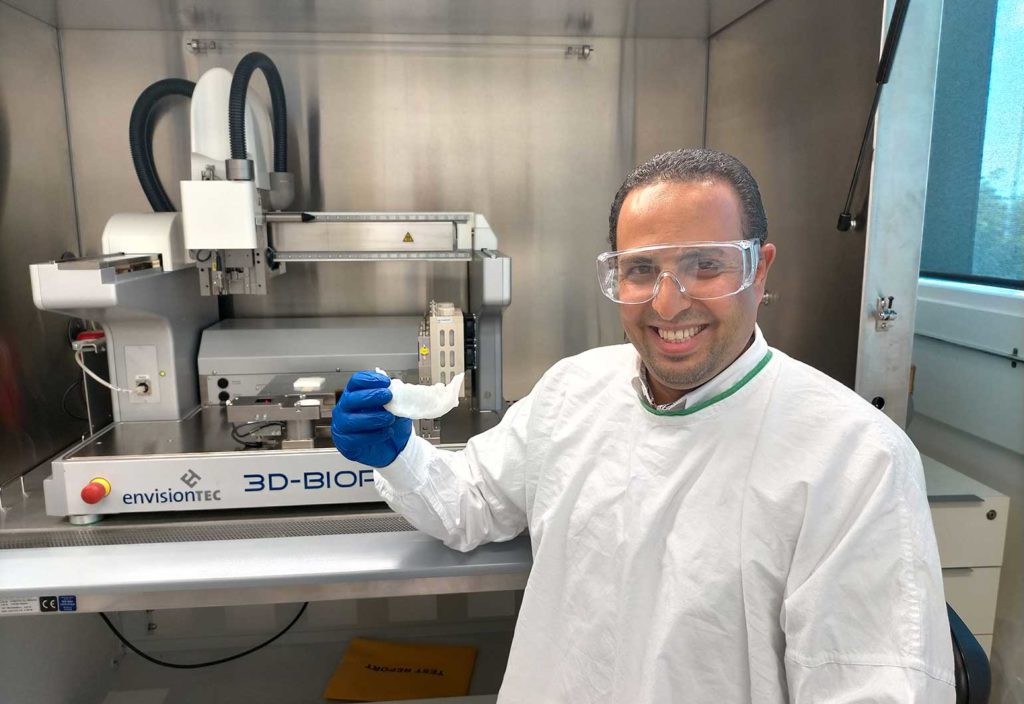Graduating with a Bachelor of Mechanical Engineering in 2005, research wasn’t immediately on the cards for Dr Abdalla Ali, engineer and University of Queensland (UQ) Research Fellow.
“I was an honours student — I didn’t expect to be appointed a teaching/research position,” Dr Ali told Create.
“[So] I started working in industry, working in the mechanical design section of a commercial kitchen and hotel.
“I was a supervisor there and had a high salary, but I moved to university because I wanted to work on developing something useful for humans.”
Working as a university research and teaching assistant, Ali was soon drawn to the area of biomaterials.
“I attended a conference about biomaterials and biodegradable implants, and found the field of bone tissue regeneration impressive,” he said.
He completed his PhD at Chonbuk National University in South Korea, focusing on the use of magnesium and its alloys in bone tissue regeneration. He subsequently published several journal articles, taught biomaterials courses at the university level and spent about a year as a research professor for the Prometeo grant — one of most prestigious fellowships in Ecuador.
With a strength in biomaterials, Ali was soon invited to work at the UQ School of Dentistry, where he could draw upon his experience working with magnesium.
“Chloride in the human body makes it a good environment for the absorption of magnesium hydroxide,” he explained.
It occurred to Ali to find a way to incorporate magnesium hydroxide in dental implant trials.
“For dental implants to work, we want to build up the bone in a vertical direction, so we have enough bone to hold the implant” he said.
“So, we made a mesh scaffold from magnesium and PCL [polycaprolactone], which helps in bone formation.”
The project kicked off in 2018, starting with in vitro laboratory testing.
“We’re currently testing the effect of the implant in vivo, on the skull of a sheep,” Ali said.
“The implant will be tested for four to six months, then we’ll follow up to see how much bone formation has occurred around this implant, and how the hydration rate of the skull has been affected. In three to four weeks we expect to start the histology analysis of this work.”
Applications in dentistry and beyond
The new technology has a range of potential applications.
“If someone has a periodontal disease or bone disease, they may lose part of the bone,” Ali said.
“This scaffold helps with bone formation, and could also be used for bone defects, tumours, chrono facial and oral facial applications.”
Once in vivo testing is completed, Ali expects to move to clinical trials.
“We’re in a good position — we’ve had almost 80 per cent TGA [Therapeutic Goods Administration] approval already on medical grade PCL,” he said.
“We’re in a good position indeed to move forward in clinical or industrial applications.
“We’re also expecting to soon have a professional patent in Australia; something that hasn’t been done before.”
But it’s not only the chance to tread new ground that motivates Ali.
“We talk about engineers and applications,” he said.
“It’s doable and applicable… That’s what I’m trying to do — to create something helpful for others.”
